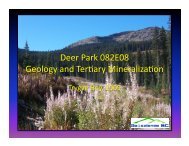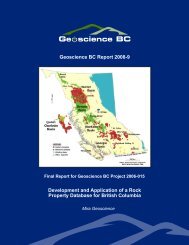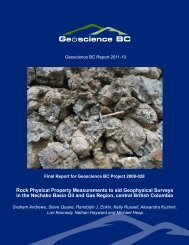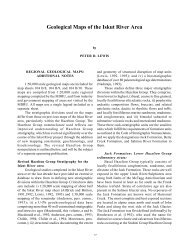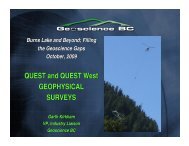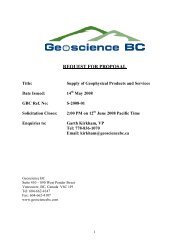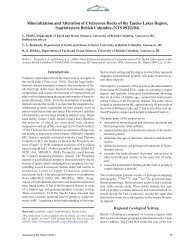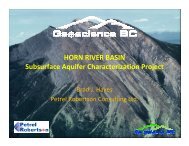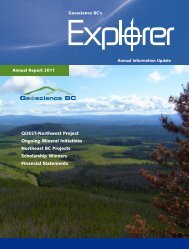Download this Presentation - Geoscience BC
Download this Presentation - Geoscience BC
Download this Presentation - Geoscience BC
Create successful ePaper yourself
Turn your PDF publications into a flip-book with our unique Google optimized e-Paper software.
Summary<br />
• For alkalic porphyries, magnetic (oxidized) rocks are interesting, but<br />
magnetite rich intrusives/alteration not as common in calc-alkalic settings<br />
• Later phyllic alteration can destroy primary igneous and secondary<br />
hydrothermal magnetite in host rocks in both alkalic and calc-alkalic settings<br />
• Conductivity information can be very useful for detecting structures;<br />
Intrusive bodies are usually resistive as a result of coherency<br />
• IP surveys are very effective in detecting peripheral pyrite halos<br />
• Scale important! At 5 km scale, magnetic and resistivity signatures likely<br />
relate to rock type and structure, not mineralization; IP most effective<br />
• There is no unifying geophysical model for porphyries - need to understand<br />
typical background rocks and alteration, general structural orientations –<br />
important for applying outside of <strong>BC</strong>!<br />
– Host rocks (magnetic/non; brecciated/coherent)<br />
– Depth of formation/erosion (related to alteration mineralogy/halos)<br />
– Metal distribution (connected, disseminated Zoning)





